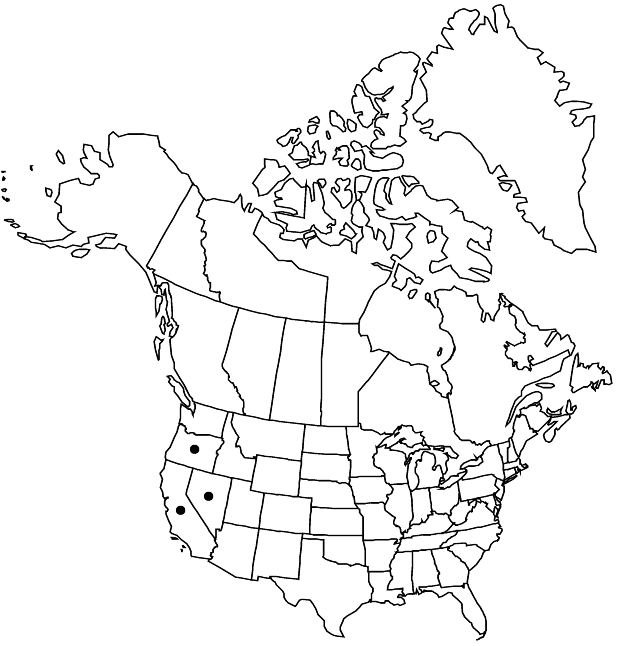Micranthes aprica
in N. L. Britton et al., N. Amer. Fl. 22: 135. 1905,.
Plants solitary, in clumps, or sometimes mat-forming, with bulbils on caudices, or rhizomatous. Leaves basal; petiole flattened, 0.5–2 cm; blade obovate to elliptic, 1.5–4 cm, fleshy, base attenuate, margins entire or apically denticulate, eciliate, surfaces glabrous or sparsely hairy. Inflorescences 5+-flowered, densely crowded in 1–3 glomerulate, often flat-topped thyrses, 3.5–15 (–20) cm, sparsely purple-tipped stipitate-glandular. Flowers: sepals ascending to spreading, ovate; petals white, not spotted, elliptic to linear, clawed, 1.8–3 mm, slightly longer than sepals; filaments linear, flattened; pistils connate to 1/2 their lengths; ovary inferior, appearing more superior in fruit. Capsules purple, folliclelike. 2n = 20.
Phenology: Flowering summer.
Habitat: Rocky alpine and snowbed meadows
Elevation: 1700-4500 m
Distribution

Calif., Nev., Oreg.
Discussion
Specimens of Micranthes aprica from the Klamath region of California and Oregon are unusually robust, occur at unusually low elevations, and have usually pollen-sterile flowers (P. E. Elvander 1984). In the Steens Mountains of southwestern Oregon, specimens that are morphologically similar to M. rhomboidea from some Utah locations can be found. Although tentatively relegated to M. aprica, these populations need thorough study.
Selected References
None.
Lower Taxa
"full" is not a number.